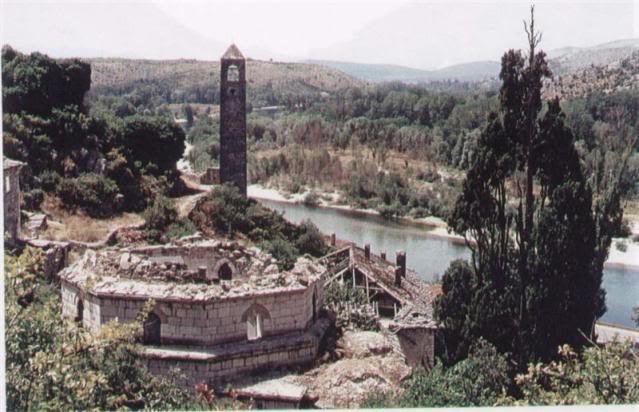Pocitelj, Bosnia and Herzegovina
Pocitelj is a small village located in the Herzegovina region of Bosnia and Herzegovina, known for its well-preserved Ottoman-era architecture, which has earned it a place on the UNESCO World Heritage List. Pocitelj’s history dates back over 600 years, and it is an important cultural and historical site for the people of Bosnia and Herzegovina. The village was first mentioned in historical records in the late 14th century, and it became an important center of trade and culture in the following centuries, particularly well-known for its silver and goldsmiths who produced exquisite jewelry and decorative items.
In the 16th century, Pocitelj came under Ottoman rule, and the village’s architecture began to reflect the influence of Ottoman culture. Many of the buildings that can be seen in Pocitelj today were constructed during this period, including the Hadzi-Alija mosque, the Sahat-kula (clock tower), and the Gavrankapetanovic-Kuca (Gavrankapetanovic house).
Landmarks
-
Hadzi-Alija Mosque
The Hadzi-Alija mosque, built in 1563, is one of the oldest mosques in Bosnia and Herzegovina and one of the most important historical and cultural landmarks in Pocitelj. The mosque’s distinctive stone walls and minaret are typical of Ottoman-era architecture, and are a testament to the skill of the craftsmen who built it.
-
Sahat-kula (Clock Tower)
The Sahat-kula, or clock tower, is another iconic landmark in Pocitelj, built in the 17th century, and served as a way for the villagers to tell time. The tower is made of stone, and is more than 20 meters tall. It is still in good condition today, and visitors can climb to the top to enjoy stunning views of the surrounding countryside.
-
Gavrankapetanovic-Kuca (Gavrankapetanovic House)
The Gavrankapetanovic-Kuca, or Gavrankapetanovic house, is a typical example of Ottoman-era residential architecture, built in the 17th century. The house features traditional stone walls and a red-tile roof, and its interior has been preserved, allowing visitors to see the original furniture and decor that would have been used by the family that lived there.
-
Kravice Waterfalls
Pocitelj is also home to several natural landmarks that are worth visiting. The village is located on the banks of the Neretva river, and the surrounding countryside is dotted with vineyards and orchards. Visitors can also take a hike up to the nearby Kravice waterfalls, which are one of the most popular tourist attractions in the region.
Restoration
Despite facing damage during the Bosnian War, Pocitelj has been slowly restored in recent years, and many of its buildings have been rebuilt or repaired. Today, Pocitelj is a thriving cultural and historical center and an important destination for tourists and locals alike. Its well-preserved Ottoman-era architecture and natural landmarks make it a unique and beautiful destination to explore.
Getting There
Pocitelj is located approximately 30 kilometers south of the city of Mostar. The easiest way to get there is by car, as there is limited public transportation available. If you’re driving from Mostar, simply take the E73 highway south and follow the signs to Pocitelj. There is a large parking lot located just outside of the village, and from there it’s a short walk to the main square and the various landmarks in the village.
Conclusion
Pocitelj is a unique and fascinating destination in Bosnia and Herzegovina, with a rich history and culture that is reflected in its well-preserved Ottoman-era architecture. Whether you’re interested in history, culture, or natural beauty, Pocitelj has something to offer. Be sure to visit the Hadzi-Alija mosque, the Sahat-kula clock tower, and the Gavrankapetanovic-Kuca house, and take a hike up to the nearby Kravice waterfalls to experience the beauty of this remarkable region.
Sources:
